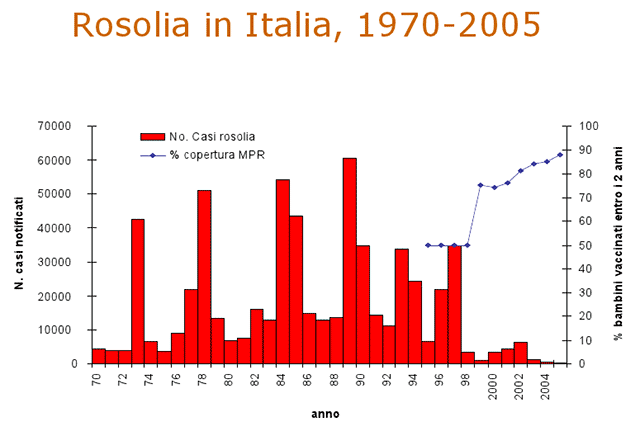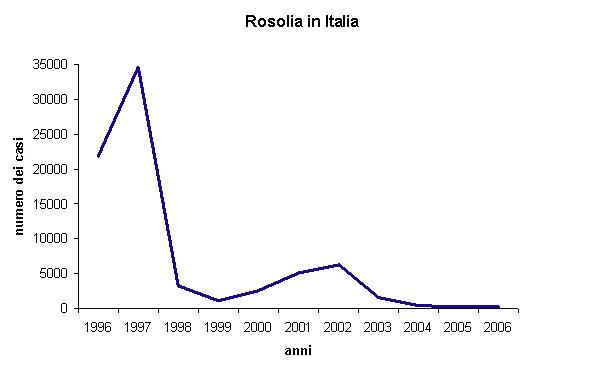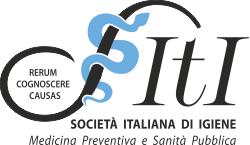The epidemiological curves comparing pre- and post-vaccination periods show a sharp decrease in the number of cases over the years. It is clear that vaccinations have significantly changed the incidence of diseases for which immunisation exists, thus saving lives, reducing disease outcomes, reducing overall population suffering and improving quality of life.
The disease before and after the vaccination campaign in Italy
With the increase in vaccination coverage by two years of age there has been a decrease in the number of rubella cases (Figure 1). In particular with the national campaign of elimination of Measles Mumps and Rubella through the MMR vaccine there was a drastic reduction in the number of cases.

In Italy the surveillance of natural rubella has relied on two methods: reports and the network of sentinel paediatricians. Reporting has been in place in Italy since 1970. Mandatory reporting of congenital rubella, however, remained in force only until 1991, when it was suspended and reintroduced with the ministerial decree of October 14, 2004. Data relating to reported congenital rubella between 1991 and 2004 therefore do not exist.
Regarding the disease in children and adults, the number of cases reported between 1970 and 2001 indicates a recurrence of epidemics approximately every 4-5 years, until the last epidemic in 1997, with about 35,000 cases reported. Subsequently, the incidence fell, with a maximum of 5,500 cases reported. About 70% of cases occurred in children under 15 years of age.
The system of sentinel paediatricians was launched in 2000, and covered about 4% of the national population under 15 years of age: in 2002 the network estimated a high incidence with about 300 cases per 100,000 children, especially among those aged 10 to 14. This network, by its very nature, does not give any information regarding rubella cases among adults.
Observing the epidemiological data on rubella cases in Italy from 1996 to 2006 shows that the trend undergoes a series of oscillations, with a maximum of almost 35,000 cases reported in 1997. From 2002 onwards, the trend sees a decrease in the number of rubella cases, up to the minimum of 257 cases in 2006.




